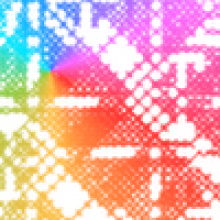In the movie Star Wars: Episode IV—A New Hope, the Death Star was designed to be the perfect weapon, with enough firepower to destroy a thousand star systems. Yet a small, ragtag group was able to blow it up. If only Emperor Palpatine had consulted with testers, all of the Death Star’s vulnerabilities could have been found and addressed!
In the movie Star Wars: Episode IV—A New Hope, the Death Star was designed to be the perfect weapon, with enough firepower to destroy a thousand star systems. It was conceived by the greatest minds in a galaxy far, far away, built by an army of clones and construction droids, and financed by the wealthy Galactic Empire. Yet a small, ragtag group (including teenagers, a scoundrel, and a Wookiee) was able to blow up the Death Star—in total Industrial Light & Magic style.
What went wrong? If only Emperor Palpatine had consulted with testers, all of the Death Star’s vulnerabilities could have been found and addressed before it went KA-BOOM!
Master Jedi James Bach assesses risk—the danger that something bad will happen—using the following model:
THREAT –> VULNERABILITY –> PROBLEM –> VICTIM
A threat is a “condition or input external to the product that, were it to occur, would trigger a problem in a vulnerable product.”
A vulnerability is “something about the product that causes or allows it to exhibit a problem, under certain conditions (also called a fault).”
A problem is “something the product does that we wish it wouldn’t do.”
A victim is “someone that experiences the impact of a problem.” A bug is not important unless it victimizes humans—or sentient alien life forms. Unfortunately, Imperial Law does not recognize the victimization of droids, even though R2-D2 makes a sad whiny whistle sound. (There, there, R2. Master Luke wouldn’t appreciate a whiny robot.)
In keeping with Star Wars tradition, this article is divided into three parts: a trilogy of risk assessment and management. This installment, part one, starts with an analysis of the Death Star’s main cannon.
This devastating weapon is designed to destroy an entire planet with a single blast of its laser beam. Very impressive. The people of planet Alderaan surely would have trembled in fear had they known they were about to be vaporized by this cannon.
Testers, however, would have pointed out a glaring vulnerability of the Death Star’s main cannon. A large mirror or similar reflective object could deflect the cannon’s laser beam back at the Death Star. Critics of this idea may point out the difficulty of building a mirror large enough to deflect the beam, but if the Death Star, a space station the size of a small moon, can be constructed, then it would be even easier to build a large mirror. In fact, a large mirror may not even be necessary to deflect the Death Star’s laser beam. In Star Wars: Episode I—The Phantom Menace, Queen Amidala’s spaceship is reflective enough to accomplish the same task as a mirror. A fleet of these ships could be used to deflect the Death Star’s beam.
In this scenario, the threat is a large mirror or a fleet of shiny spaceships. The vulnerability is the Death Star’s main cannon laser being reflected back upon itself. The problem is the main cannon’s deflected laser can destroy the Death Star itself. The victims are the humans and alien life forms aboard the Death Star when it blows up in a fiery explosion of epic proportions. Sadly, many innocent IT workers also died in that explosion. They were just harmlessly installing printers and updating software patches, but war always has unintended casualties—even so-called star wars.
The moral of this article isn’t about the horrors of war, but the necessity for better testing. Testers could have saved the Death Star. For anyone who still believes that good testing is too expensive or irrelevant, remember the Death Star. KA-BOOM!
Stay tuned for Part Two of this trilogy. . . .


User Comments
If the mirrors could deflect the laser, the storm troupers should have used them! :)
On the other hand we'll be seeing more US jets with mirrors. I would believe that the LaWS(Laser weapons system) from the US army would be usefull even against mirrors. What do you think?
I think all lasers can be reflected. But science fiction uses special effects lasers generated by computer graphics and the power of one's imagination, so anything is possible :)
The innocent IT workers knew the risks - I cite the Death Star Contractors scene from Clerks!
You may be right. But have you considered that Emperor Palpatine used his Jedi mind trick to influence the IT workers into doing his bidding? Remember that the dark side of the Force is more powerful than the light side. Two Sith Lords are equal to about 100 Jedi.
Lasers and mirrors get tricky. A laser powerful enough to destroy a planet would burn through most mirrors.
The bigger bug was the thermal exhaust port. I suspect that someone filed a bug on the issue, but a manager decided that it wasn't much of a use case for an X-Wing to make it near the port, so there wasn't enough ROI to fix the bug.
Hi Asher,
The thermal exhaust port is a serious bug, but it wasn't fixed or even known since the Empire didn't seem to know the Rebellion's plan. This further proves that there wasn't adequate testing conducted on the Death Star. Too much of the IT budget was spent on installing printers and repairing cute, mouse-like droids that scare easily.